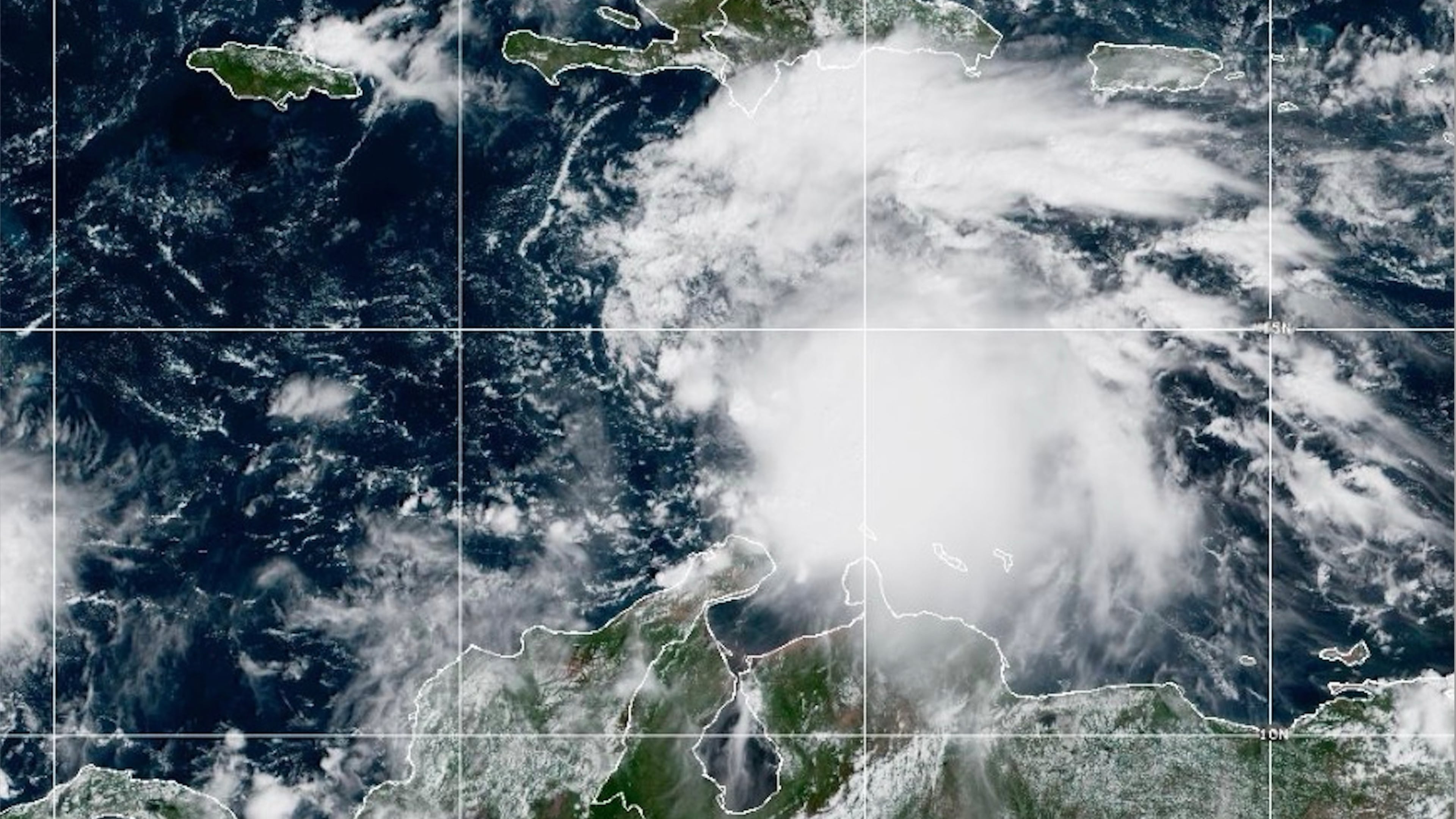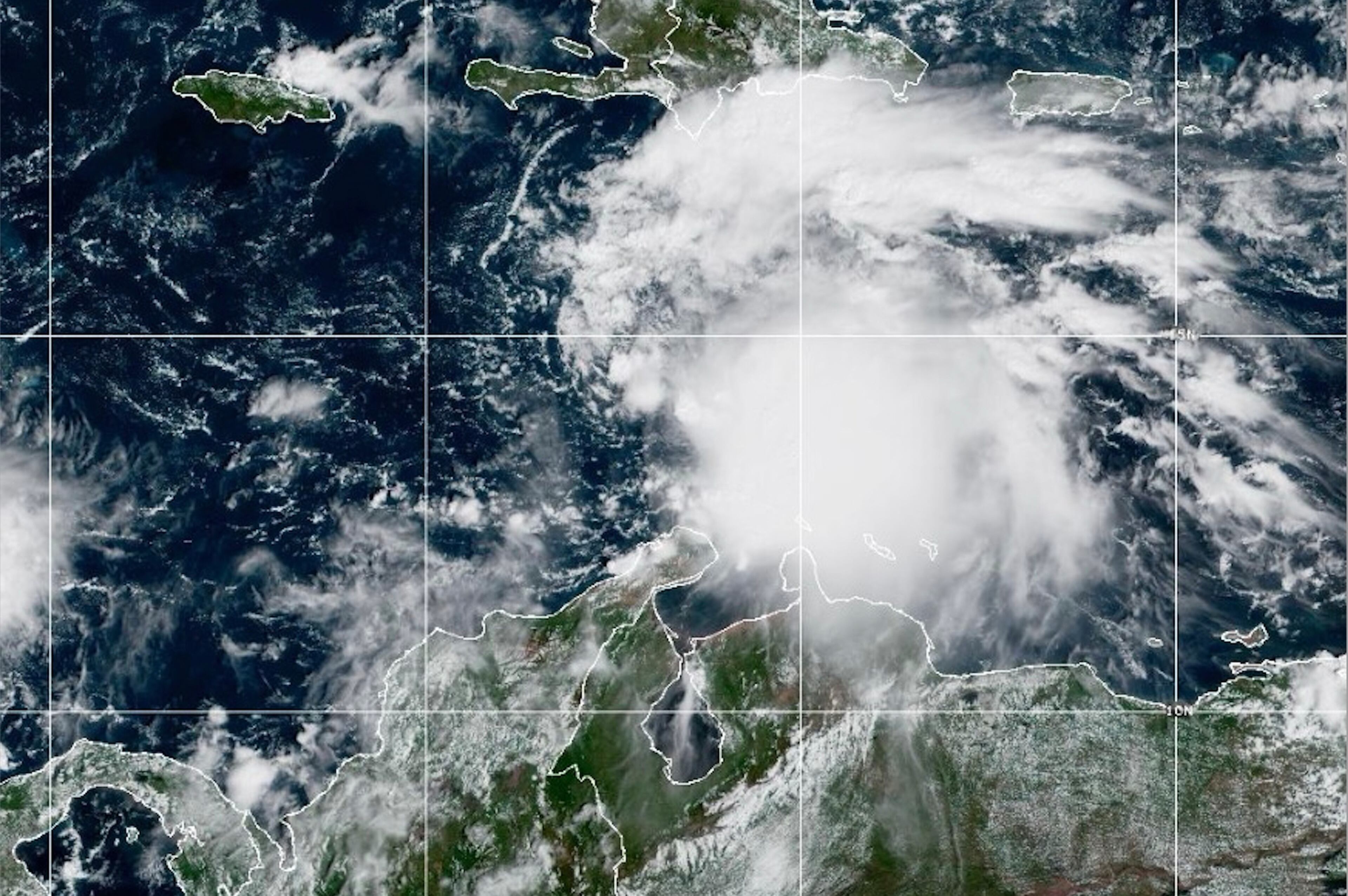Tropical Storm Melissa lumbers through the Caribbean, killing an elderly man in Haiti

SAN JUAN, Puerto Rico (AP) — Tropical Storm Melissa lumbered through the Caribbean Sea on Thursday, bringing a risk of dangerous landslides and life-threatening flooding to Jamaica and southern Hispaniola — an island shared by the Dominican Republic and Haiti. Officials urged residents in flood-prone areas to seek higher ground.
The storm was blamed for downing a large tree that killed an elderly man in the coastal town of Marigot in southern Haiti, while five other people were injured in flooding in the central Artibonite area, according to the Civil Protection Agency.
The slow-moving storm was centered about 185 miles (300 kilometers) south-southeast of Kingston, Jamaica, and about 295 miles (475 kilometers) southwest of Port-au-Prince, Haiti. It had maximum sustained winds of 45 mph (75 kph) and was moving north-northwest at 2 mph (4 kph), the U.S. National Hurricane Center in Miami said.
A hurricane watch and tropical storm warning was in effect for Jamaica and the southwestern peninsula of Haiti.
“The system is still moving very slowly,” said Michael Brennan, the U.S. National Hurricane Center's director. “We are very concerned about the potential for multiple days of long duration wind, storm surge, heavy rainfall and flooding impacts.”
‘A recipe for disaster’
Melissa was expected to remain over open water this week, but move closer to Jamaica and southwestern Haiti in upcoming days. It was expected to strengthen into a hurricane by Saturday and become a major hurricane by the end of the weekend, possibly reaching Category 4 status by Tuesday.
“The very warm waters and slow movement of this storm are a recipe for disaster,” said Alex DaSilva, AccuWeather’s lead hurricane expert. “Rapid intensification into a Category 5 hurricane is not out of the question.”
Barbara Campbell, who works in Kingston, Jamaica's capital, said by phone that she has prepared her home and bought food and water ahead of the storm.
“I'm very worried,” she said.
In Jamaica, officials said that 881 shelters would be made available as needed. Courts were ordered closed and schools were to switch to remote classes on Thursday. Meanwhile, crews placed 1,000 sandbags in the eastern part of Kingston to prevent flooding from a nearby gully.
“Our main focus is to be prepared for what could be a very damaging storm,” Works Minister Roberto Morgan said.
Health Minister Christopher Tufton warned that Jamaica’s 325 health centers would close by Thursday afternoon, and that the storm could interrupt supply chains, including those of life-saving medication.
He said all hospitals are in emergency mode and have generators capable of providing power for up to 72 hours.
“It’s important that the public take the next couple of hours to prepare themselves,” he said.
Jamaica's government warned of upcoming power outages and noted it has already flown in dozens of additional line workers to help in the storm's aftermath.
Forecasters said Jamaica's eastern region could see up to 14 inches (36 centimeters) of rain that could lead to flooding and landslides because the ground is already saturated from recent heavy rains unrelated to the storm.
"The system is still evolving," said Rohan Brown with Jamaica’s Meteorological Services. “We urge everybody to be vigilant.”
More than 100 people remained sheltered in the Dominican Republic, where schools, businesses and government agencies were closed in the nine provinces under alert. Dozens of water supply systems remained out of service on Thursday, affecting more than half a million customers. The storm also downed trees and traffic lights and unleashed a couple of small landslides.
“People must remain in their homes for security reasons,” said Juan Manuel Méndez García, emergency operations director in the Dominican Republic.
Up to 14 inches (36 centimeters) of rain also was forecast for southern Haiti and the southern Dominican Republic, with higher amounts possible through Sunday.
The U.S. National Hurricane Center in Miami warned that “significant, life-threatening flash flooding and numerous landslides" were expected in Jamaica and southern Hispaniola.
Storm sparks concern for Haiti
People were concerned about the storm's impact in Haiti, which has been devastated by past storms given widespread erosion. Gang violence, poverty and weak governance mean storm preparations are limited.
The U.N. Office for the Coordination of Humanitarian Affairs, or OCHA, announced Thursday that $4 million was set aside to help more than 10,000 vulnerable people in Haiti before the storm. The money will go toward lifesaving evacuation support, cash transfers, emergency shelter management and water, sanitation and hygiene kits, the agency said.
Flooding is a big concern since Haiti reported 139 suspected cholera cases and five deaths in one week alone earlier this month after nearly three months of no cases.
“This outbreak is unfolding amid a severe deterioration of basic services in the capital, where only 11% of health facilities with inpatient capacity remain fully operational,” OCHA said.
Melissa is the 13th named storm of the Atlantic hurricane season, and the first named storm to form in the Caribbean this year.
The U.S. National Oceanic and Atmospheric Administration had predicted an above-normal season with 13 to 18 named storms. Of those, five to nine were forecast to become hurricanes, including two to five major hurricanes, which pack winds of 111 mph (178 kph) or greater.
The Atlantic hurricane season runs from June 1 to Nov. 30.
___
Associated Press reporter Evens Sanon in Port-au-Prince, Haiti contributed.
____
Follow AP’s coverage of Latin America and the Caribbean at https://apnews.com/hub/latin-america

